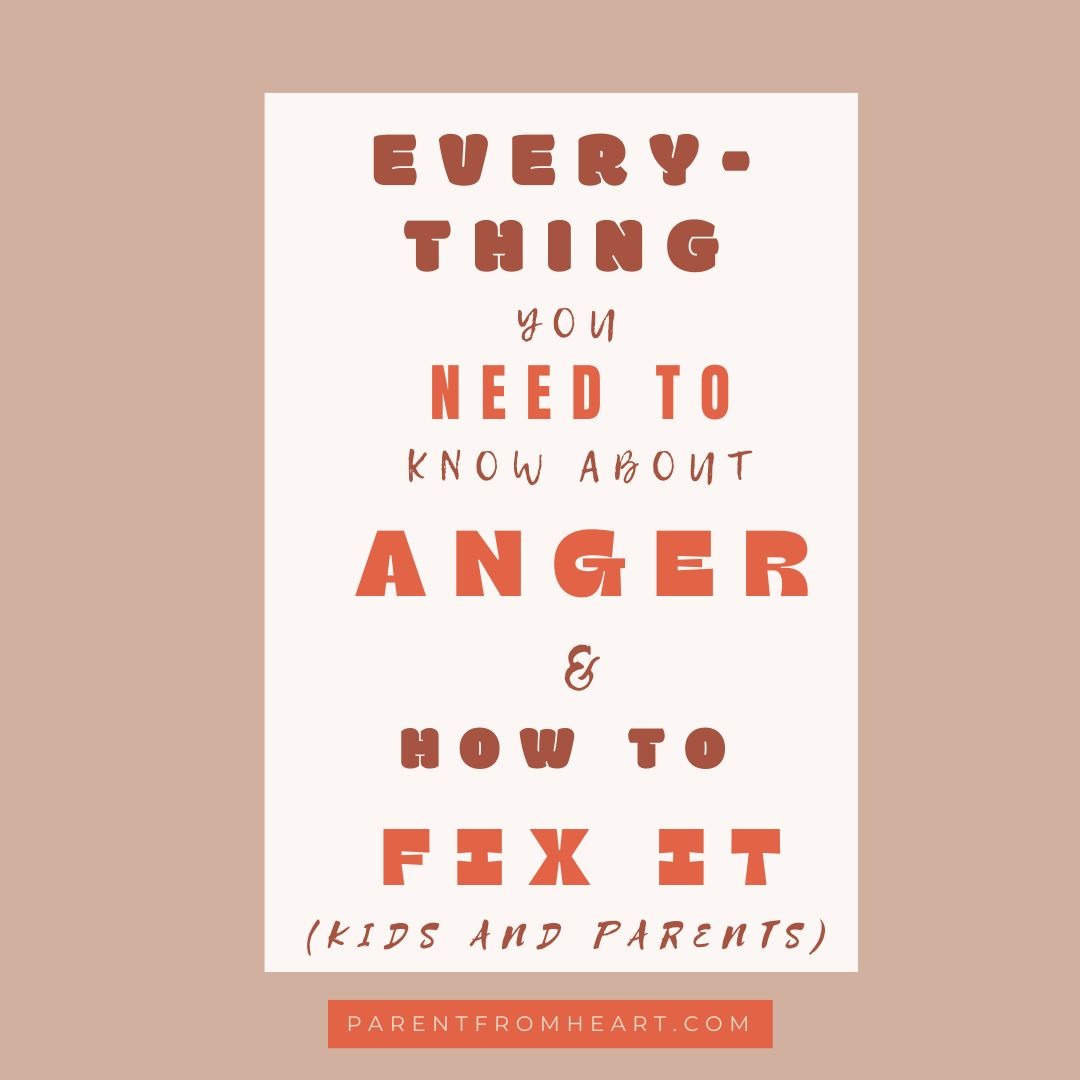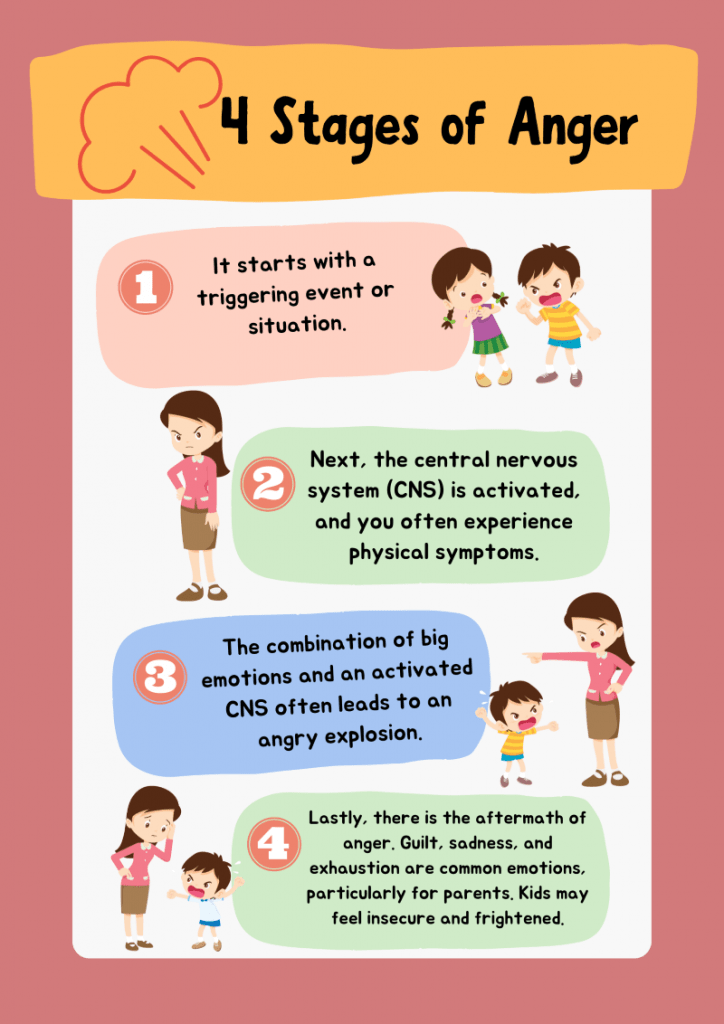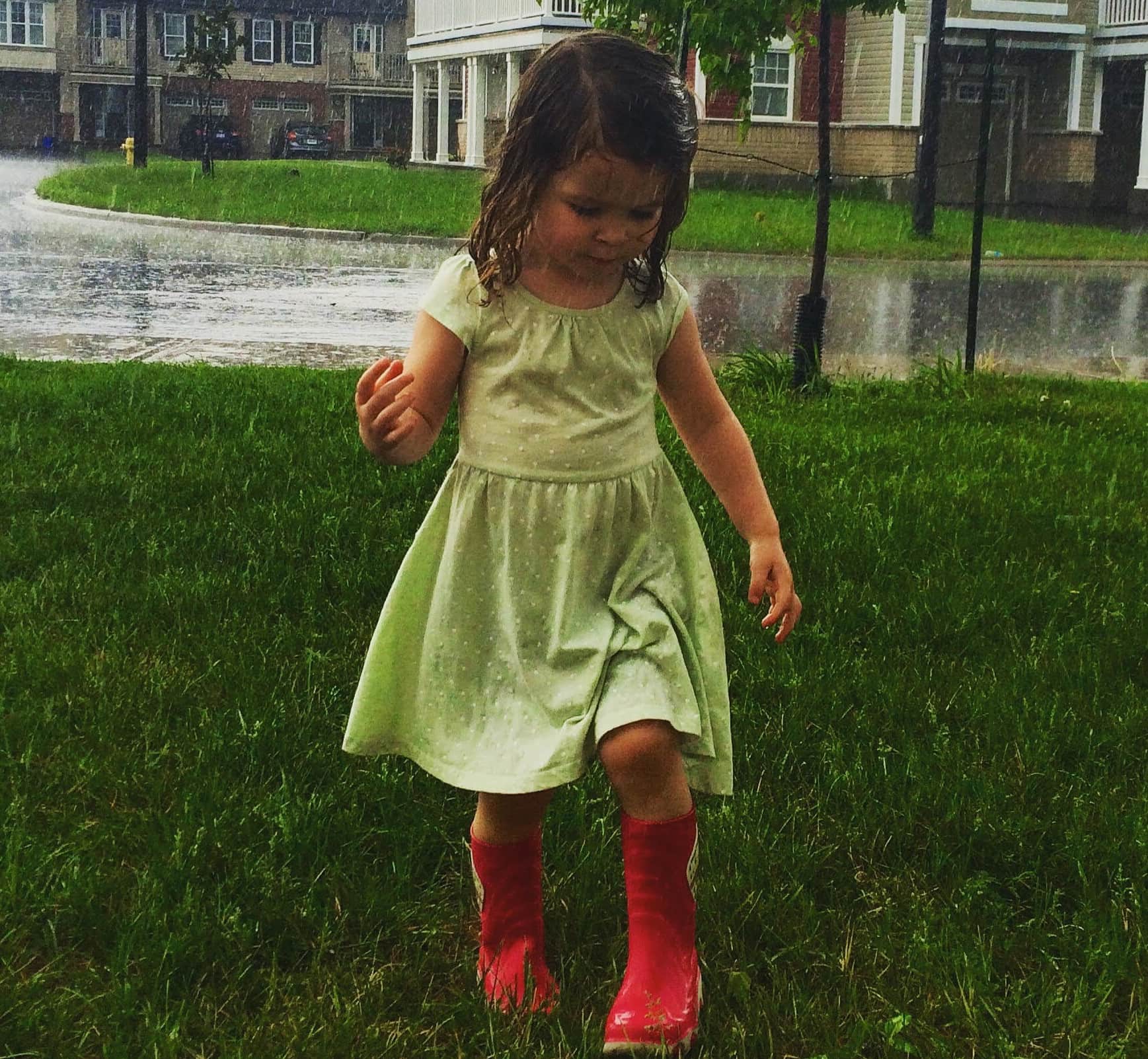Table of Contents
Are you an angry parent? Do you have an angry kid?
Parents aren’t honest about anger.
I have no shame (now) in admitting that I was an angry mom for the first few years of motherhood. I had two under two while working full-time, my babies strapped to me while I clocked in my hours.
My second son was brought into my life to teach me how to be a better parent by not just pushing boundaries but leaping over them and heading for the hills.
Unfortunately, motherhood was a trial by fire, and no one in the family made it out unscathed. I was a dragon, constantly breathing fire and stomping on the emotions of those around me.
My marriage suffered, and so did my relationship with my kids. More frightening, though, was the anger it inspired in my children as their behavior and defiance reached new heights.
The day that changed everything for me is forever burned into my mind. While trying to cook dinner, my fighting kids raced through the kitchen, knocking me (and the pot of rice I was holding) over in the process. From my spot on the floor covered in rice, I screamed at my kids—not yelled or shouted—screamed.
And I have never seen such terror on my kids’ faces.
My boys were too scared to get close to me, even as I tried to apologize. Something inside me broke that day, and I knew things had to change.
What Is Anger?

Anger is an emotion just like joy, sadness, and excitement. It’s not inherently good or bad; it just is. Your reaction or response to anger, however, can be positive or negative.
For parents, anger can be a hard pill to swallow because it is a big emotion caused by the little person you love so much. For kids, anger is often a response to internal dysregulation and feeling overwhelmed by big emotions.
Anger can also be a substitution emotion.
If you use a Feelings Wheel, you will see that anger might actually be
- frustration
- bitterness
- disappointment
Anger can sometimes be a distraction from the underlying emotions, making it hard to deal with.
“Anybody can become angry-that is easy; but to be angry with the right person, and to the right degree, and at the right time, and for the right purpose, and in the right way-that is not within everybody’s power and is not easy. ”
Aristotle
Types of Anger
There are different types of anger.
Passive Aggressive Anger
- Giving the silent treatment
- Pretending everything is fine when you are clearly upset
Open Aggression
- Lashing out at those around you
- Shouting
- Criticizing
Assertive Anger
- Holding firm on your boundaries
- Consciously choosing to validate your anger and respond to a situation
Stages of Anger
Anger also has stages, both for parents and kids.

Stage 1
It starts with a triggering event or situation. Maybe you cut the sandwich into triangles instead of squares. Or perhaps your child used your new lipstick to draw a picture on the wall.
Stage 2
Next, the central nervous system (CNS) is activated, and you often experience physical symptoms. You might clench your fists or your jaw, and your heart rate might increase. Kids often start to breathe quicker and get red in the face.
Stage 3
The combination of big emotions and an activated CNS often leads to an angry explosion. This can look like shouting and aggressive body language, and I’m sure you’re familiar with tantrums.
Stage 4
Lastly, there is the aftermath of anger. Guilt, sadness, and exhaustion are common emotions, particularly for parents. Kids may feel insecure and frightened.
Overall, the anger cycle can be a wild ride, especially when both parent and child are involved.
Why Do We Get Angry?
For many parents, anger is a go-to response from childhood.
It is a learned behavior, and often, your “triggers” stem from experiences you had as a child. It’s very possible that you had a parent who struggled with emotional regulation, and so you never learned how to effectively deal with your feelings.
Anger is complex and not caused by one thing. Unfortunately, our world constantly demands our attention, and it can be overwhelming and overstimulating.
Common Anger Triggers
Anger doesn’t happen in a vacuum; it takes a spark. Those sparks are called triggers, and our kids (and their behavior) are usually the biggest triggers we encounter.
Triggers cause an emotional reaction rather than a conscious response.
When angry count to ten before you speak. If very angry, count to one hundred.
Thomas Jefferson
Common anger triggers include
- Defiance
- Not listening
- Tantrums
- Feeling embarrassed
- Feeling frustrated
- Whining
- Sibling conflict
I’m sure you’ve experienced the above triggers. The worst is when multiple triggers happen at the same time, like your child having a tantrum at a restaurant.
But what makes you a ticking time bomb rather than a pressure cooker with a release valve?
- Exhaustion: Being tired means you don’t have the emotional reserves to handle challenging situations with patience.
- Technology: Your smartphone means everyone has access to you all the time. On the flip side, it gives you access to way too much information, not to mention social media and the constant comparison with someone else’s perfectly curated feed.
- Overwhelm: They say it takes a village to raise a child, so where’s it at? I, for one, have yet to discover the magical village that will make mothering easier. When your proverbial cup is empty, and burnout is on the horizon, keeping your cool takes more self-control than you probably have.
- Decision Fatigue: Have you ever considered how many decisions you make each day? Some internet sources say that we make 35,000 decisions every day. Some people have questioned that number, but I don’t know of any mom who isn’t immediately like, “Oh, yes, that’s probably accurate.” With so many decisions to make, it’s no wonder you lose your mind when your child asks about dinner or whether the people will become extinct like the dinosaurs.
The Effects of Anger

Reactionary anger has a negative effect on you and your kids.
Anger kicks off a stress response in the body that affects everything from your heart to your gut. In fact, research shows that stress early in life can actually change brain architecture and increase adverse reactions to stressors. Research also points out that yelling makes kids more verbally and physically aggressive.
Our anger is scary for kids. Think about it. You are the person they love most in the world and feel safe with. It makes sense that seeing you dysregulated and out of control will affect them.
Has your anger ever helped the situation? Probably not.
Kids can struggle to separate themselves from your anger and criticism. What do I mean by that? When you criticize bad behavior, your child takes that criticism personally and sees themselves as “bad.” They can’t separate criticism of the behavior from a personal attack.
When kids feel “bad,” they behave accordingly.
Anger and Your Parenting Style
Your parenting style can make the anger situation in your home better or worse.
Authoritarian: The Drill Sergeant
Strict rules. High expectations. Zero tolerance for disobedience.
This style is about immediate compliance, but it comes at a cost. Kids with authoritarian parents can bottle up anger. Imagine trying to push an inflatable ball underwater. You push, push, push, and eventually, the pressure will send that ball shooting up. Bottling anger works the same way, and your kid is going to explode. If this is your parenting style, you’re likely on edge and might find yourself snapping more often.
Tip: Balance discipline with warmth. Set clear rules but explain the “why” behind them.
Permissive: The Buddy
Few rules. Endless freedom. Anything goes.
Permissive parents aim to be their child’s friend, often avoiding conflict at all costs. This can backfire. Without boundaries, your kids may struggle with self-control and get angry when they don’t get their way. You may feel overwhelmed by your children’s demands, making you frustrated and resentful.
Tip: Establish boundaries. Kids need structure to feel secure and manage their emotions effectively.
Authoritative: The Guide
Firm but fair. Rules with reasons. Open communication.
This style is the sweet spot. Authoritative parents set clear expectations but are also responsive and nurturing. Your kids understand the rules and the reasons behind them, fostering self-discipline and reducing anger. When you feel respected and understood, you are less likely to lose your temper.
Tip: Engage in open dialogue. Validate your child’s feelings while maintaining consistent boundaries.
Neglectful: The Ghost
Disengaged. Little interaction. Minimal supervision.
Neglectful parenting can lead to all kinds of issues. Your kids may feel abandoned, leading to deep-seated anger and behavioral problems. As a neglectful parent, you are detached from your children’s lives.
Tip: Get involved. Show interest in your child’s life to build a stronger, healthier relationship.
Reframing “Bad” Behavior

We usually label triggering behavior as “bad.” But what if we shifted the narrative and reframed “bad” behavior?
All behavior is communication, and yes, we don’t always like the way our kids communicate, but we have more emotional regulatory skills to deal with it than they do.
Aggression, defiance, and tantrums are three major trigger categories. However, all three are very normal developmental stages.
Aggression
- Hitting
- Kicking
- Biting
- Pushing
- Insults
- Name-calling
Kids want to explore and test boundaries. My newly crawling son, for example, wanted to climb the stairs, but we said no because they were extremely steep. When he made a dash for them anyway, and I promptly grabbed him, he took a chunk out of my arm.
Kids get aggressive when they are frustrated or feeling out of control. They may also struggle to verbally communicate how they are feeling but aggression certainly sends the message.
Tantrums
- Crying
- Screaming
- Kicking
- Hitting
Ask any parent about tantrums, and they will say, “The Terrible Twos.” But a child having a tantrum is just a child who is dysregulated and struggling with big emotions.
I know it doesn’t make the moment any easier, especially when tantrums happen in public. Tantrums are super stressful and embarrassing, and most parents react with anger.
However, young kids don’t have the cognitive skills to regulate their own emotions. That’s where coregulation comes in. You have to be the calm in your child’s storm until they can manage their emotions independently.
Defiance
- Resisting authority
- Disobedience
- Not listening
- Backtalk
- Arguing
- Emotional outbursts
Defiance is common during the teen years and might have made an appearance if you have a “threenager.”
As your kids learn to assert their independence you might see defiant behavior more often. I said common, not easy! Firm, fair, consistent boundaries are the best defense against defiance. When your kids know that there are consequences for crossing boundaries, they realize defiance is pointless.
Leveraging the Power of Communication
If “bad” behavior is a form of communication, it makes sense that improving verbal communication could help create a more peaceful home.
I should preface this by saying that good communication can’t happen without connection. When you connect with your kids through attention and responsive conversation, they are less likely to act out in ways that trigger you.
Your language shapes your attitudes. When you communicate in a positive and responsive way with your kids, they feel connected and respected. Kids who feel valued for who they are, even in the moments they make mistakes, are more likely to cooperate.
Respectful communication when you are angry or frustrated can be a game-changer. Instead of blaming and shaming your kids, you are modeling emotional regulation. The language you use acts as a mirror for your kids. It can tear them down and perpetuate the anger cycle, or it can build their confidence and self-esteem.
Anger-Fighting Strategies for Parents and Kids
Parents

Focus on the Behavior, Not the Child
Pause, step back, and be firm but fair when you address misbehavior. Use “I” statements to help you hold a boundary and focus on behavior.
- “I feel upset when you interrupt me because it’s important to listen to each other. Please wait until I finish talking.”
- “I feel frustrated when you don’t pick up your toys because it makes it hard to keep the house clean. Please help me by putting them away.”
- “I feel disappointed when the rules aren’t followed because they are there to keep everyone safe. Let’s review the rules together.”
Leading With Curiosity
Curiosity allows you to take a step back and notice why you are angry and what your body is doing. When your first instinct is to yell, pause, and look at why.
- How does your body feel? Are you breathing heavily? Are your fists clenched?
- Name the emotion you’re feeling.
- Is the emotion linked to the situation or a specific behavior?
- Are there other reasons you might be angry? Are you hungry, tired, anxious, or overwhelmed?
When you pause before reacting, you model healthy emotional regulation and give yourself a minute to be more conscious in the moment.
Boundaries and Routines
Part of ditching anger is getting ahead of it. With boundaries and routines, you can create an environment where your kids know what is expected of them.
- Set boundaries with your kids. Have a family meeting and work out some “house rules” that everyone can get on board with.
- Have clear and consistent expectations during transitions and before situations like going to the store. For example, “We’re sticking to our shopping list today. If you see something you like, let’s talk about it, and maybe we can put it on the list for next time.”
- Have patience, and be flexible. Routines are about structure and balance, not rigidity.
- Have bedtime and morning time routines that set your kids up for success. If your kids know what is expected of them and do it daily, you won’t need to yell and nag.
Kids

A 2024 meta-analysis of 154 studies about anger found that the best way to reduce anger is to do activities that calm the nervous system. The research also shows that activities like breathing, meditation, and yoga decrease anger, while venting doesn’t.
Deep Breathing
Exercise: Balloon Breathing
Ask your child to imagine they are blowing up a balloon. They should take a deep breath in through their nose, filling their lungs, and then slowly blow out through their mouth as if they are inflating a big balloon. Repeat this 5-10 times.
Guided Imagery
Exercise: Magic Carpet Ride
Have your child close their eyes and imagine they are on a magic carpet ride. Guide them through a peaceful journey, describing soothing scenes like floating over a calm ocean, gliding through a forest, or drifting among the clouds. This visualization can help them relax and feel safe.
Progressive Muscle Relaxation
Exercise: Body Scan
Ask your child to get comfortable. Starting from their toes and moving up to their head, ask them to tense each muscle group for a few seconds and then release. Encourage them to notice how their body feels as they relax each muscle group.
Quiet Time Corner
Exercise: Cozy Corner
Create a designated quiet space in your home with soft pillows, blankets, and a few calming items like books or stuffed animals. When your child feels overwhelmed, they can retreat to this cozy corner to relax and decompress.
Anger Doesn’t Have To Be Your Go-To
Being an angry parent can make you feel hopeless and guilty. Experiencing your child’s anger is also challenging and exhausting.
But your home doesn’t have to be a battlefield. Once you understand the “why” behind the anger, you can learn to deal with the root cause and create a more peaceful and respectful environement.
Do you have any anger tips and tricks? We would love to hear them!
FAQs
Q: Why does my child get angry so easily?
Kids get angry for all sorts of reasons. Sometimes they are tired, hungry, or overstimulated. But a child that is quick to anger may be frustrated and unable to properly communicate their needs with you.
Q: Is it normal for my child to have frequent angry outbursts?
Yes! Tantrums and emotional outbursts are developmentally appropriate as kids learn to regulate their emotions. Your job is to keep calm and coregulate until they can do it independently.
Q: How can I help my child manage their anger?
The best way to help your child manage their anger is for you to manage yours. Modeling is one of the most powerful tools in your parenting toolbox.
Q: What are some signs that my child’s anger might be a problem?
If your child’s anger disrupts daily life even after working to put routines, boundaries and other strategies in place then it may be time to ask for help.
Q: How do I stop getting angry at my child?
Identify your triggers and focus on responding instead of reacting. When you respond it means you have taken a minute to calm down and are dealing with the present moment. A reaction is your default mode and often based on something that happened in the past.










